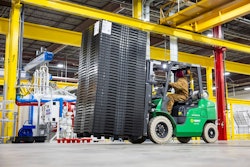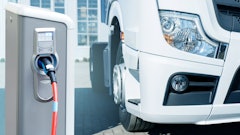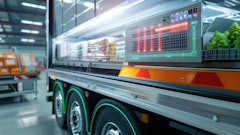
Teletrac Navman and Vontier launched its Mobilizing the Future of Fleets Report: 2025 Energy Edition, which found 63% of fleets are reporting customer demand as influential in their decision to switch to alternative energies, and the speed at which they do it.
This is supported by over half (58%) of the businesses surveyed citing their own brand reputation and sustainability goals as the leading drivers in their energy transition, showing “net zero fluency” is far more weighted toward customer perception and demanded than it is a compliance priority. And, only 29% suggest regulatory pressure and government mandates was guiding their decision making.
“Fleets are focusing on their own net-zero goals as a part of their corporate reputation and long-term commercial strategies, rather than just seeing it as a compliance checkbox,” says Alain Samaha, CEO of Teletrac Navman. “Customers recognize the importance of sustainable operations, and according to our research, are making active decisions around the businesses they support based on their sustainability credentials.”
Key takeaways:
· 84% of fleets are focusing on operational improvements rather than considering new vehicle investments. Regular vehicle maintenance (49%), optimizing vehicle utilization (36%), and investing in driver training (28%) are some of the key areas of fleet investment cited by fleet businesses globally to ensure better handling of their existing vehicles on the road.
· Conversely, 61% of fleets are indeed making Capex investments by upgrading to more fuel-efficient vehicles (48%) or switching to those using alternative fuels (31%), indicating an important focus on the type of vehicle being utilized and a longer-term approach being considered by businesses when reviewing and planning for their carbon reporting and impacts.
· The report also uncovered that the larger the fleet (by number of vehicles), the more advanced these businesses were in their transition. 62% of fleets with 50 or more vehicles indicated that they were already tackling their sustainability performance, with an active strategy to continue improving.
· Yet, respondents were split on their approach; 46% indicated that they complete vehicle suitability assessments with the help of external consultancy (8%), with 42% preferring an end-of-life replacement approach. 30% of fleets had also completed a total cost of ownership (TCO) analysis.
· With the shift to mixed-energy fleets continuing, 61% of operators indicated that they used more than one energy type, with 32% using three or more energy sources; PHEV (39%), BEV (37%) and natural gas (23%) were the most widely adopted alternative energy sources.
· Furthermore, 8% of fleets had already transitioned at least half of their fleets and 48% expected to reach the same milestone within the next two years, increasing to 85% of fleets in the five years.




















